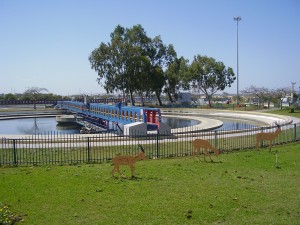Effluent water can solve many problems in our dry country, but also poses difficult health and environmental challenges

The State of Israel is located partly in an arid zone and partly in a semi-arid zone. In order to fulfill the country's water needs, unconventional solutions are therefore required. Indeed, over the years, various solutions were found, which were also adopted by other countries in which sea water desalination. Desalination by freezing was already developed in the 60s by Alexander Zarhin, and it is used to a limited extent. In recent years, desalination has come into use in Israel on a large scale due to the development of the reverse osmosis method. At the same time, the search for cheaper water sources continues.
Thus, for example, a system for the treatment and reuse of gray water was recently developed in Israel. Gray water, such as dishwashing water, is water that is used domestically for non-sanitary purposes. But the use of this water is still not approved by the Ministry of Health, due to the fear of contact between them and water that was used for sanitary purposes, such as toilet flushing water. The "Grey Water Recycling Coalition" is promoting a bill that will make it possible to establish a gray water recycling system in new homes, which will save money and water.
On the other hand, wastewater and settled water are widely used in Israel for irrigation. Effluent is a product of sewage water (or wastewater) that has undergone a series of treatments such as filtration and biological treatment in which bacteria break down the organic components of the wastewater and eliminate the pathogens found in it. At the end of the treatment, the effluents undergo quality tests to verify their suitability for the intended use. Most of the effluent is injected through soil layers into dedicated groundwater reservoirs. The water pumped from them, which is of high quality, is called settled water, and is usually used for agriculture. The State of Israel has been a world leader in the reuse of water and more than half of the irrigation water in the State of Israel is wastewater or sewage water of various qualities.
Environmental activists do support the trend of expanding the reuse of water, but such use involves quite a few problems and risks despite the purification process they have undergone. For example, studies conducted in recent years in Israel and around the world have found residues of medicines, hygiene products and cosmetics and their decomposition products in the effluent water. For this reason, the European Union recommends increasing monitoring of the impact of different mixtures of pollutants on public health. Since the concentration of these substances, also known as "new generation pollutants", in the effluent water is extremely low, it was necessary to develop new and sensitive analytical methods to quantify them. In a study recently conducted by Professor Dror Avisher in the Hydrochemistry Laboratory at Tel Aviv University, residues of drugs and other pollutants were found in water sources in Israel, used for drinking and irrigation, that remained in the effluents even after the purification process. Avisher claims that there is a need for special treatment of hospital wastewater, which is rich in drug residues and is usually discharged into the municipal system. Other studies have shown that hormones found in minimal concentrations in wastewater can cause damage to aquatic animals, including sex changes. Also, sewage water contains salts in higher concentrations than those of benign water. The addition of salt to the soil damages its fertility, therefore when making agricultural use of effluents, irrigation regimes must be adopted that reduce or prevent the damage of salinization. As the use of desalinated water (which has low salinity) increases, the salinity of the effluent will decrease.
On the other hand, effluents contain fertilizer elements such as nitrogen, and therefore their use for irrigation reduces the need for fertilization, which results in financial savings and a reduction in the environmental burden (resulting, for example, from the emission of greenhouse gases in the industrial process of fertilizer production). The use of this resource therefore requires caution, understanding the benefits and risks inherent in its use and adopting an agricultural interface that is compatible with irrigation with effluents.
__________________________________________________________________________________________________________________________________________________________________
About the authors
Uri Mingalgreen is professor emeritus in the field of soil chemistry at the Institute of Soil, Water and Environmental Sciences at the Volcanic Center. He served as the chief scientist of the Ministry of Environmental Protection. His research focuses on studying the behavior of pollutants in soil and water systems.
Bracha Reger is Professor Emeritus of Microbiology and Immunology at the Faculty of Health Sciences at Ben Gurion University, President of Ort Israel and Chairman of Ort Israel's Academic Council. Served as the chief scientist of the Ministry of Health and was a member of the Council for Higher Education.
The article was published with the permission of Scientific American Israel

2 תגובות
In my opinion, the main problem with the wastewater is the high amount of salts - the danger of soil salinization, and desertification. Therefore, desalinated water must also be desalinated. The desalination concentrate can be used for the chemical and fertilizer industry
Hello, I would like to point out that gray water is not as indicated in the example given in the article, "Dishwashing water". The gray water recycling coalition, on whose behalf I work, does not include in the definition of gray water the kitchen wastewater, but only the bathroom and washing machine wastewater, where the concentration of organics is lower.